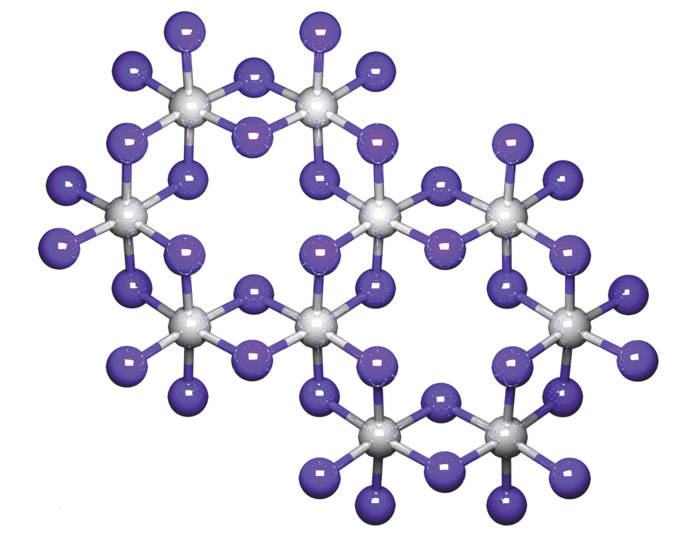Magnetic materials have been, and continue to be, highly important in computing and information technology applications. As components and devices shrink and become more powerful scientists have been looking for new, more compact, more efficient magnetic materials to match that pace. Unfortunately, up until now, all the known 3D magnetic materials lost their magnetic properties when thinned down to an individual atomic sheet.
Scientists at the University of Washington and Massachusetts Institute of Technology have for the first time found a material in the 2D world of monolayers that is robustly magnetic. The material, Chromium Triiodide (Crl3), will open "a world of potential applications," according to the University of Washington blog.
Single molecule thick CrI3 is ferromagnetic, meaning it gains its magnetism through the symmetrical spin of its electrons. Unlike other materials, it maintains this property when shaved to the thinnest possible mono-layer. Interestingly, when it is two layers thick CrI3 loses its magnetism but regains it when the material is three layers thick. Just like in the first lab tests of monolayer graphene, scientists gathered CrI3 in its 2D form using Scotch tape to shave a monolayer off its 3D crystal form.

A top-view depiction of a single layer of chromium triiodide.
Chromium atoms are depicted in grey, with iodine atoms in purple.
Looking at the potential of this newly discovered material, the UW scientists say it could spur the invention of "new information technologies". In a related body of research a few days earlier, an ultrathin form of Crl3 layered with a monoloayer of tungsten diselenide, created an ultraclean 'heterostructure' interface with unique and unexpected photonic and magnetic properties. Heterostriuctures are seen by some scientists as the key to new applications in computing, database storage, and more.













